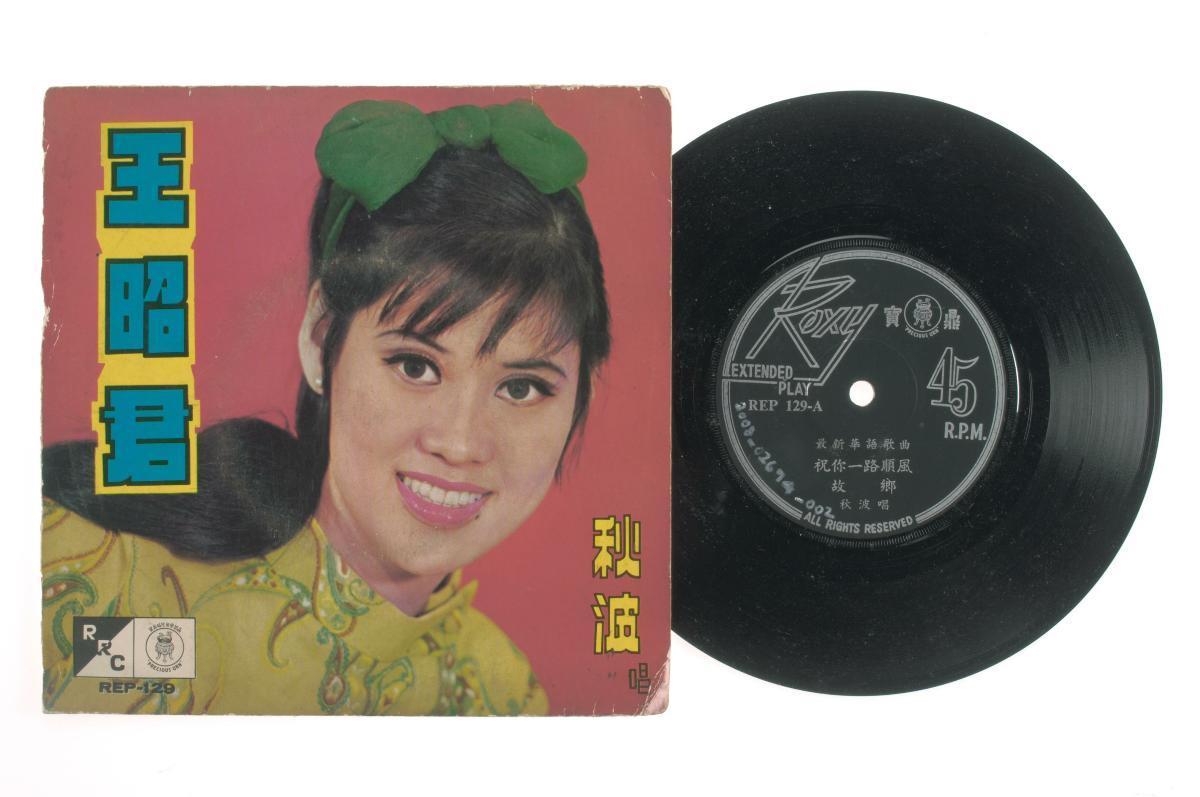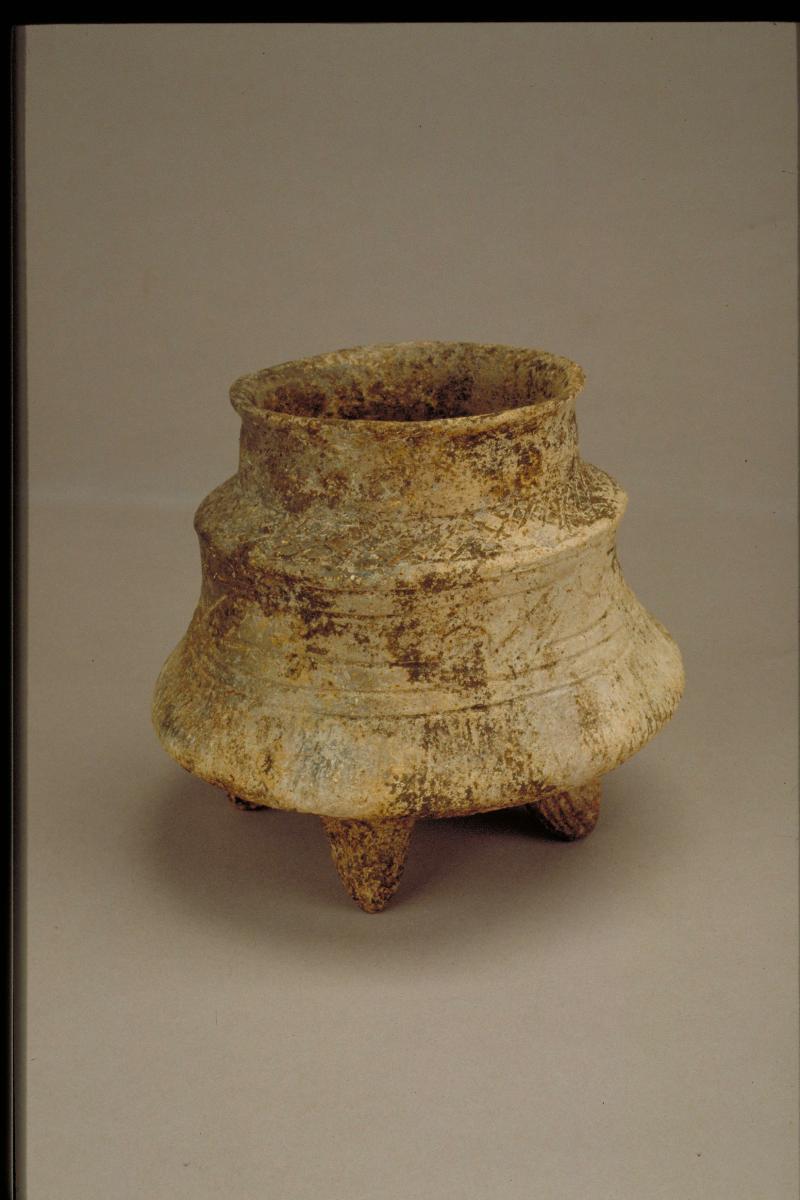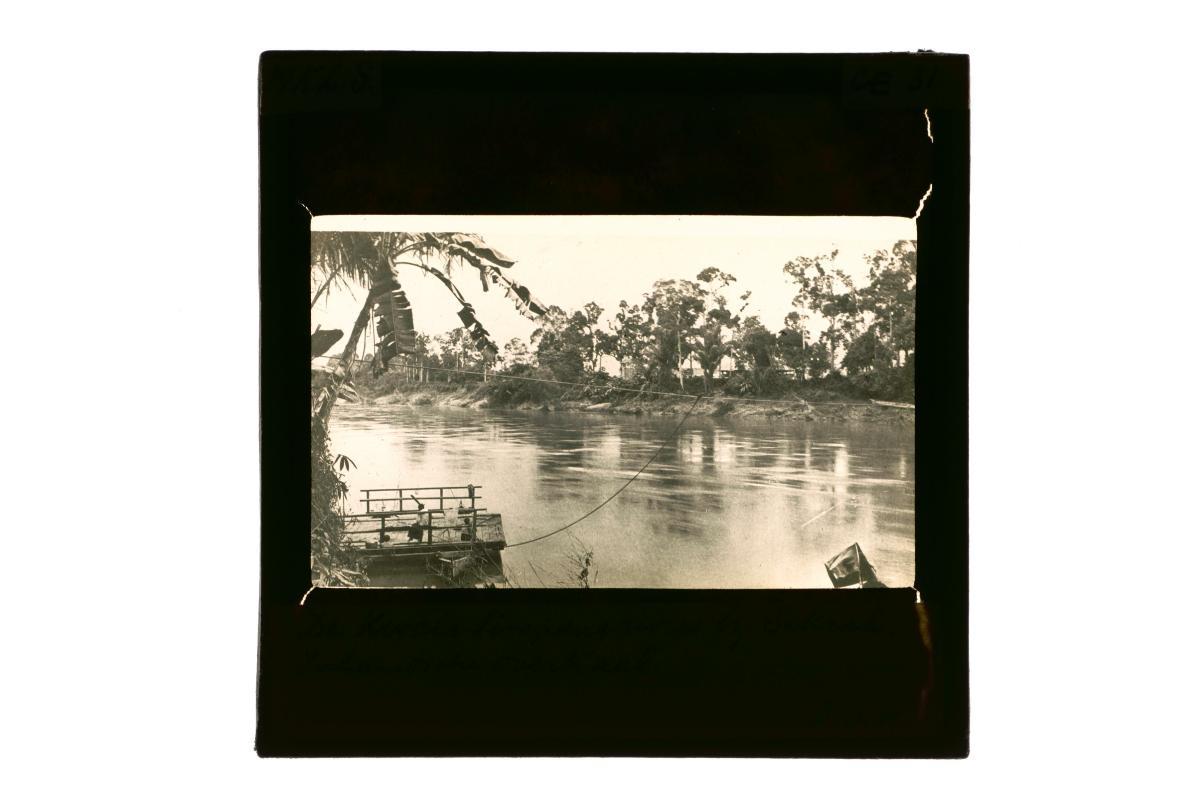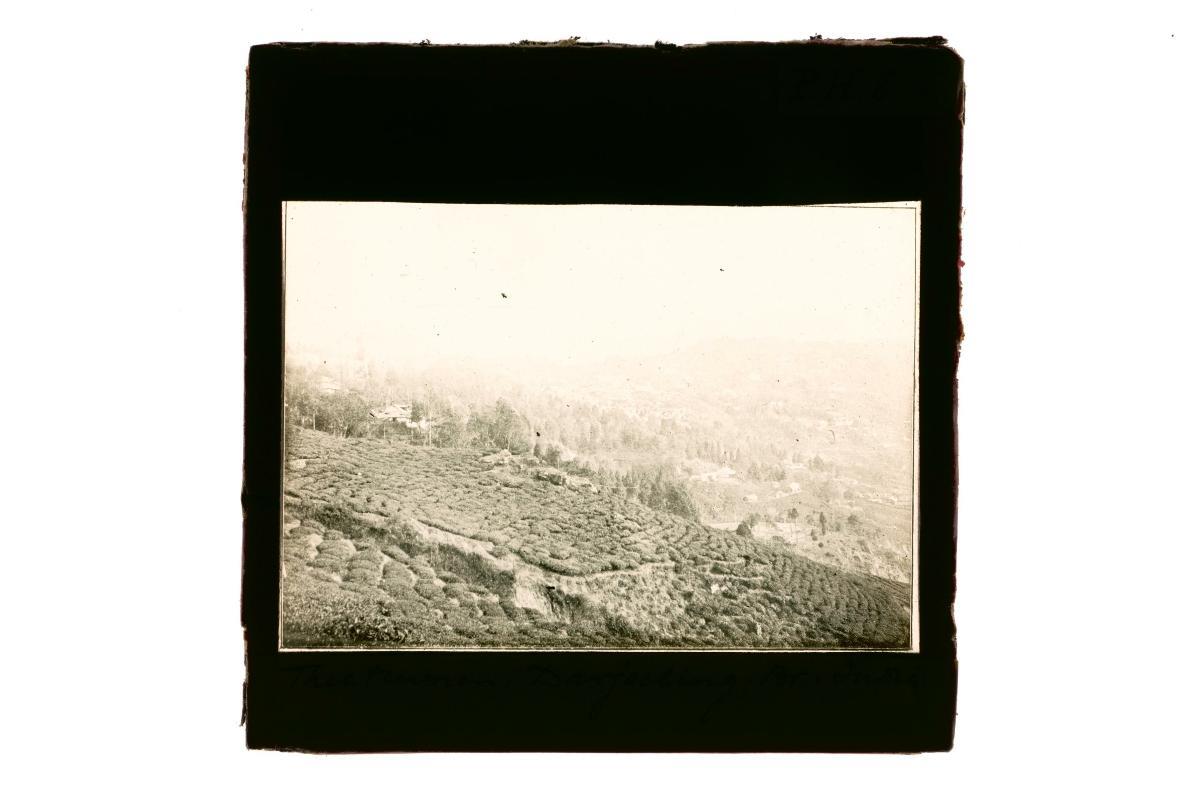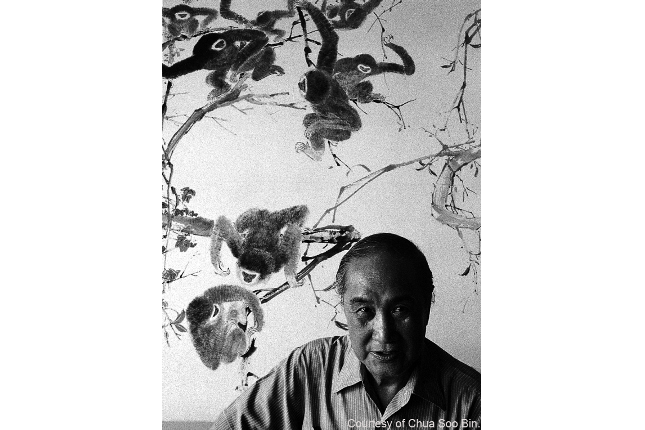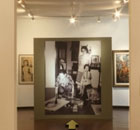This carved image of a standing female deity is extremely weathered, probably the result of having laid in the wet plains of the Mekong Delta for many centuries. However, the still visible upper torso, facial features and hair in a knot at the top of the head, suggest that this was once an elegantly carved form. Carbon dating indicates that the piece was made sometime around the 5th century CE. The kingdom of Funan, was one of the earliest wet rice kingdoms. Situated in the Mekong Delta, it thrived on the entrepot trade at the port of Oc Eo, which was brought into the region from Indian and other merchants who travelled overland across the Isthmus of Kra during the early centuries CE. However by the 5th century Oc Eo began to decline as the Malacca Straits became the main trade route.It is unclear whether Hinduism or Buddhism was first adopted in the region. By the 5th and 6th centuries, inscriptions, religious iconography and Chinese annals point to their co-existence. Chinese texts describe Funan as a centre for Buddhism which received Indian missionaries with religious texts. Funanese monks also travelled to China where they translated Sanskrit texts into Chinese





